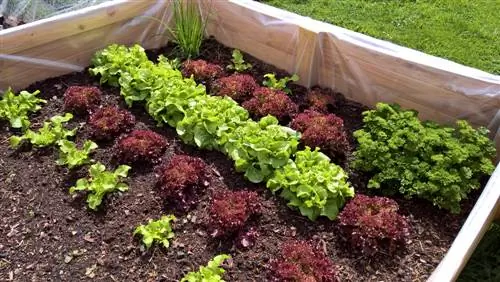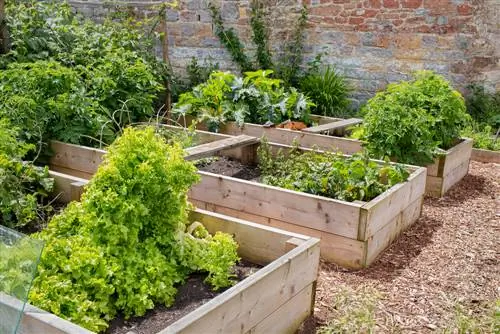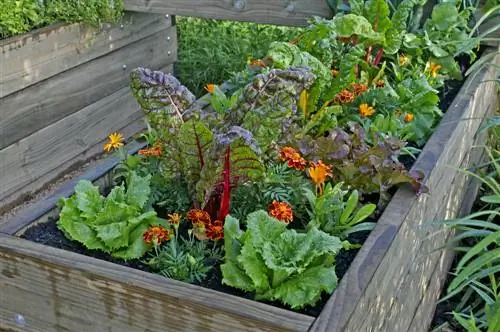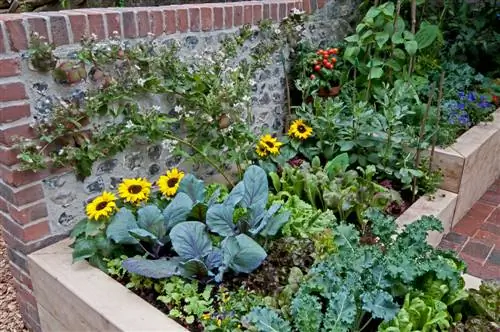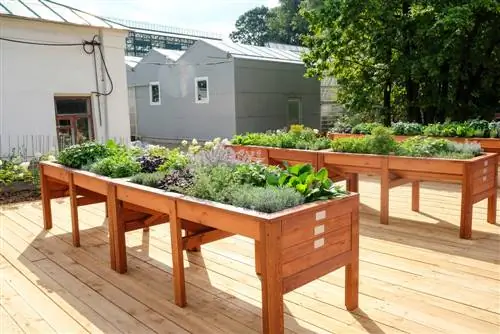- Author admin [email protected].
- Public 2023-12-16 16:46.
- Last modified 2025-01-23 11:21.
Do you want to use the space on your newly built raised bed effectively, but don't really know how? Then at this point we have some suggestions for successful mixed culture and crop rotation.
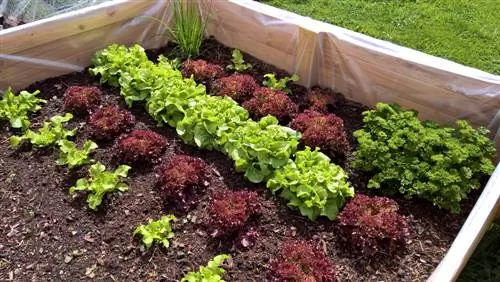
What ideas are there for designing a raised bed?
Raised bed ideas include the design of a raised salad bed for fresh salads and leafy vegetables, as well as a self-sufficient vegetable raised bed with spring, summer and autumn crops. Child-friendly raised beds contain easy-to-cultivate vegetables and fruits such as strawberries, peas, bush tomatoes and carrots.
A raised bed for salad lovers
A raised bed that is already three to four years old is perfect for growing fresh salads and leafy vegetables - they should not be planted on a freshly layered bed, otherwise they will accumulate too much nitrate. The heavily consuming tomatoes that are also grown receive an extra portion of ripe compost. And this is how you plant your salad raised bed:
Spring
Sow fast-growing lettuce, rocket and radishes between March and April. Lettuce and spinach can also be sown, although you can harvest more quickly after planting young plants. Protect the seeds and young plants from cold and frost with a fleece cover (€49.00 on Amazon). Only choose varieties that are suitable for growing in spring.
Summer
Because spinach blooms in summer, replace it with lettuce or romaine lettuce in May. Also from mid / end of May, plant tomato plants in the bed instead of lettuce, which are accompanied by basil and rocket. In addition, chard and radicchio go very well in the bed. Tomatoes, radicchio and chard remain in the bed until the end of the season. In autumn you can replace the lettuce with chicory salads, e.g. B. Endive. Romaine lettuce can stay in the bed until October and be harvested continuously.
Autumn and Winter
You can even continue to harvest in the raised lettuce bed in winter if you sow lamb's lettuce in all the vacant areas in late summer.
Vegetable raised bed for self-catering
This raised bed provides you with fresh vegetables all season long, which you can use straight away in the kitchen or preserve for the winter.
Spring
You can plant early peas in the raised bed as early as March. To do this, sow a row of early and mid-early carrots, between which you sprinkle a few dill seeds. This means that the carrots germinate better and you also have tender dill tips for seasoning in the kitchen. Parsnips or root parsley can also be added to the bed; their aromas give soups and stews the right kick. One or two spring onions complete the spring bed.
Summer
After harvesting the peas, cut the shoots just above the ground. However, leave the roots in the ground because they contain nitrogen-containing nodule bacteria and are therefore perfect for planting with heavy-feeding vegetables such as zucchini and pumpkin. A few bush beans in between and instead of the early carrots provide you with plenty of fresh beans for stews etc. Broccoli young plants now take the place of the harvested spring onions.
Autumn
Zucchini and pumpkin, but also broccoli, grow to considerable size over the course of the summer. Harvest the remaining carrots and bush beans little by little before they are overwhelmed by zucchini, pumpkin and broccoli.
Tip
An ideal raised bed for children should be kept as low as possible and contain easy-to-grow sweet vegetables and fruits. For example, strawberries, peas, bush tomatoes and carrots are ideal.
Additional information on ergonomic gardening is compiled for you in this article.

